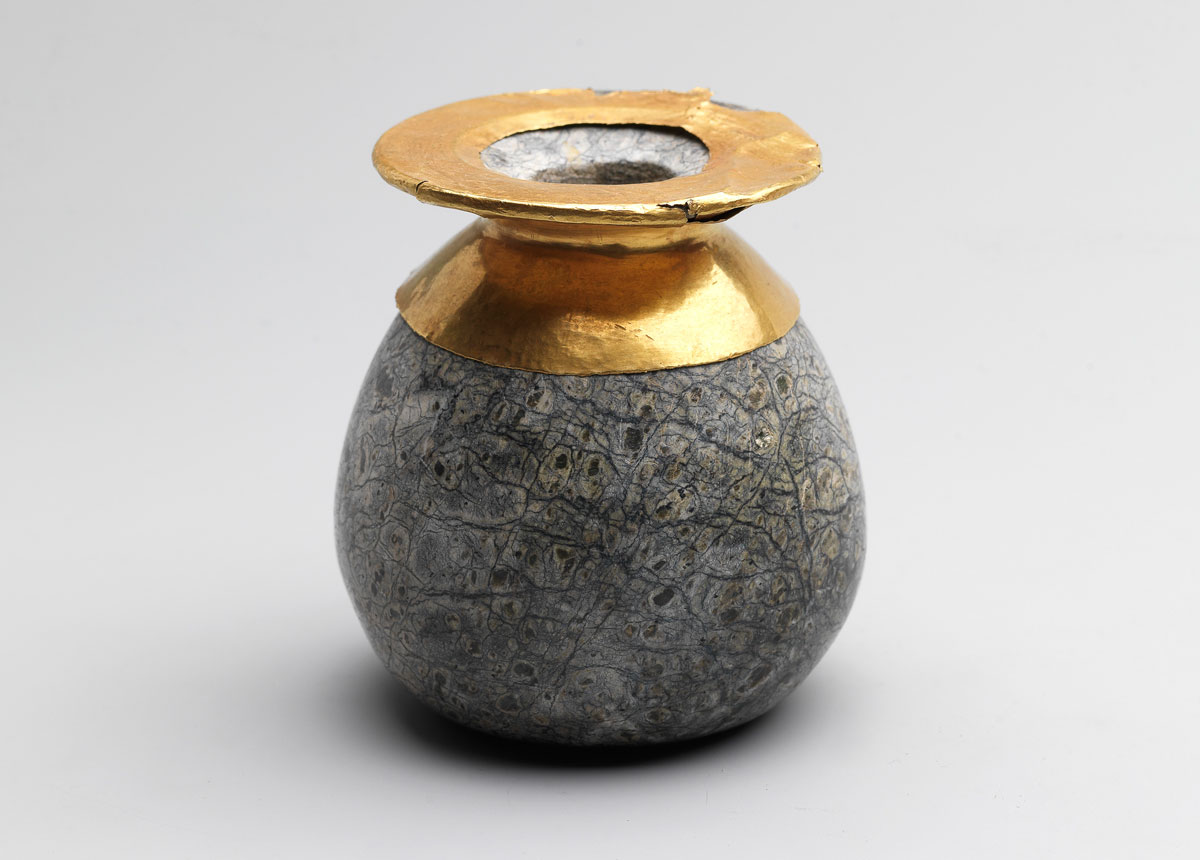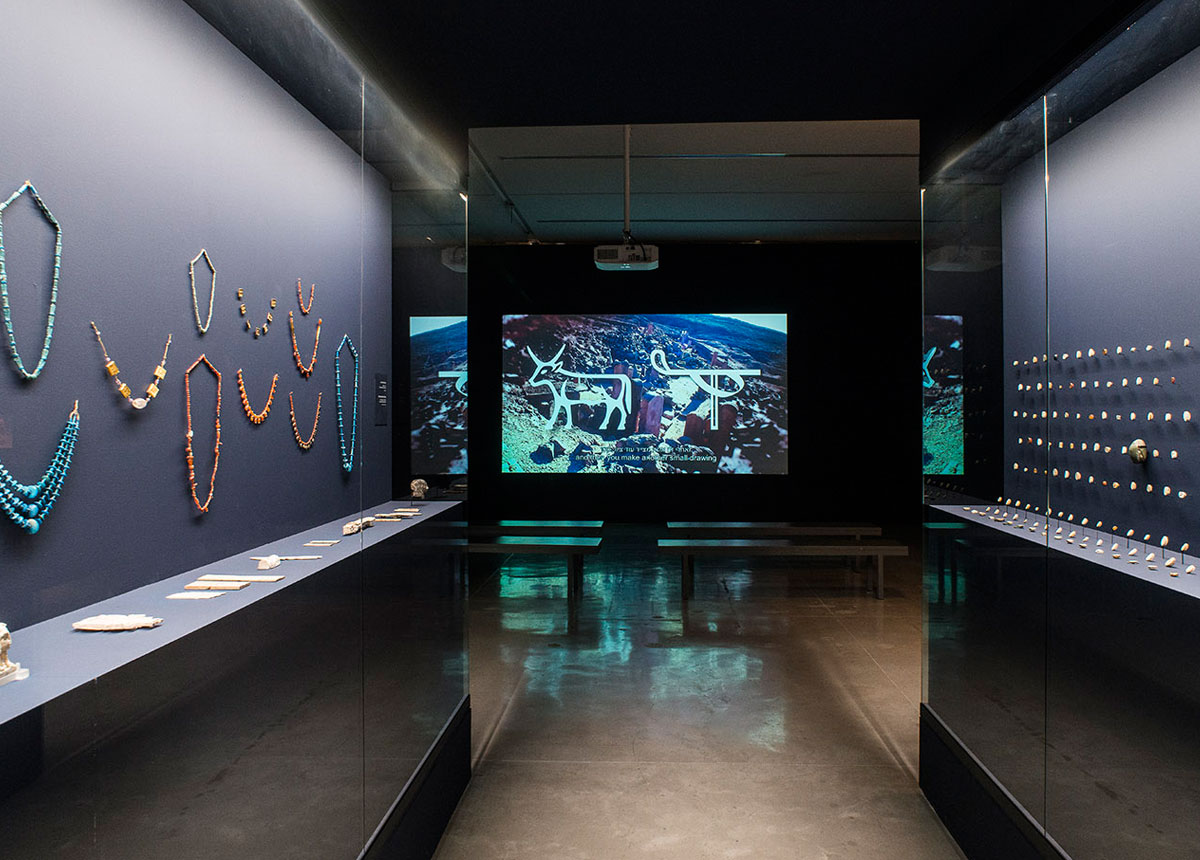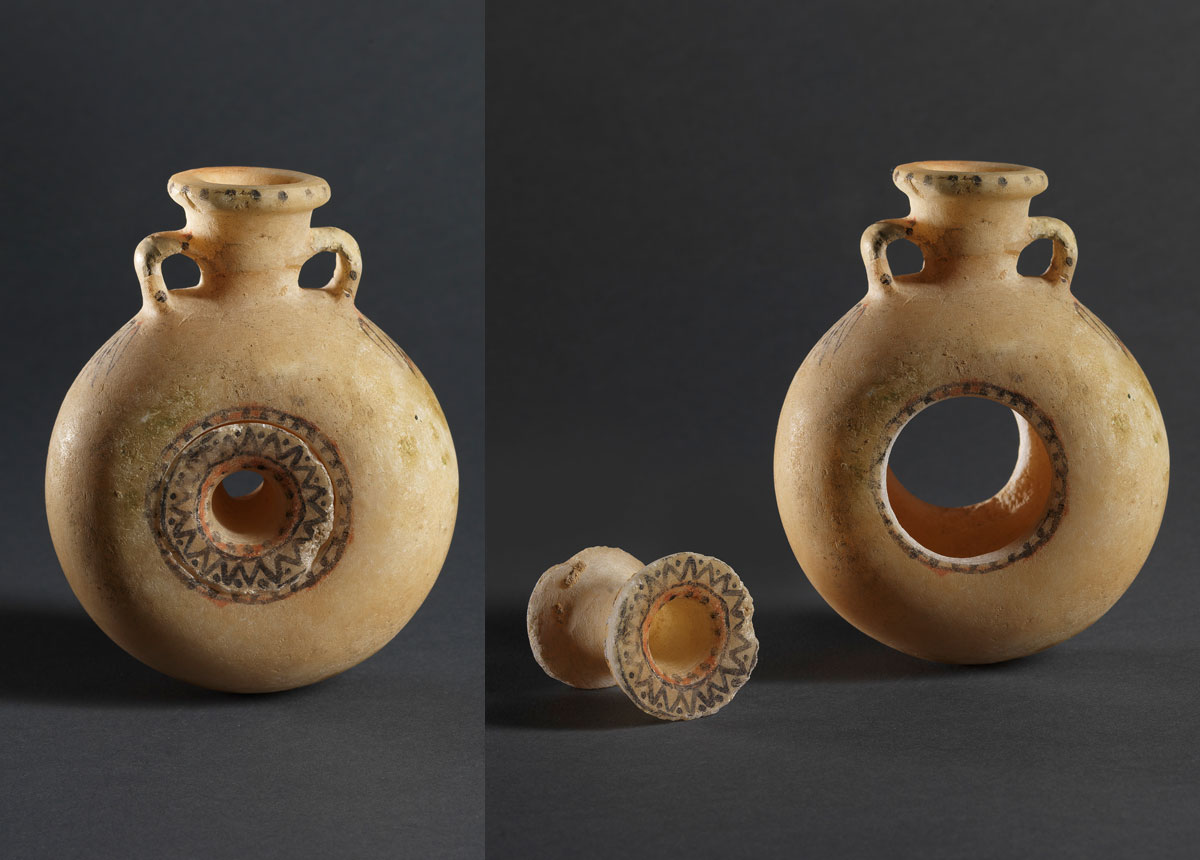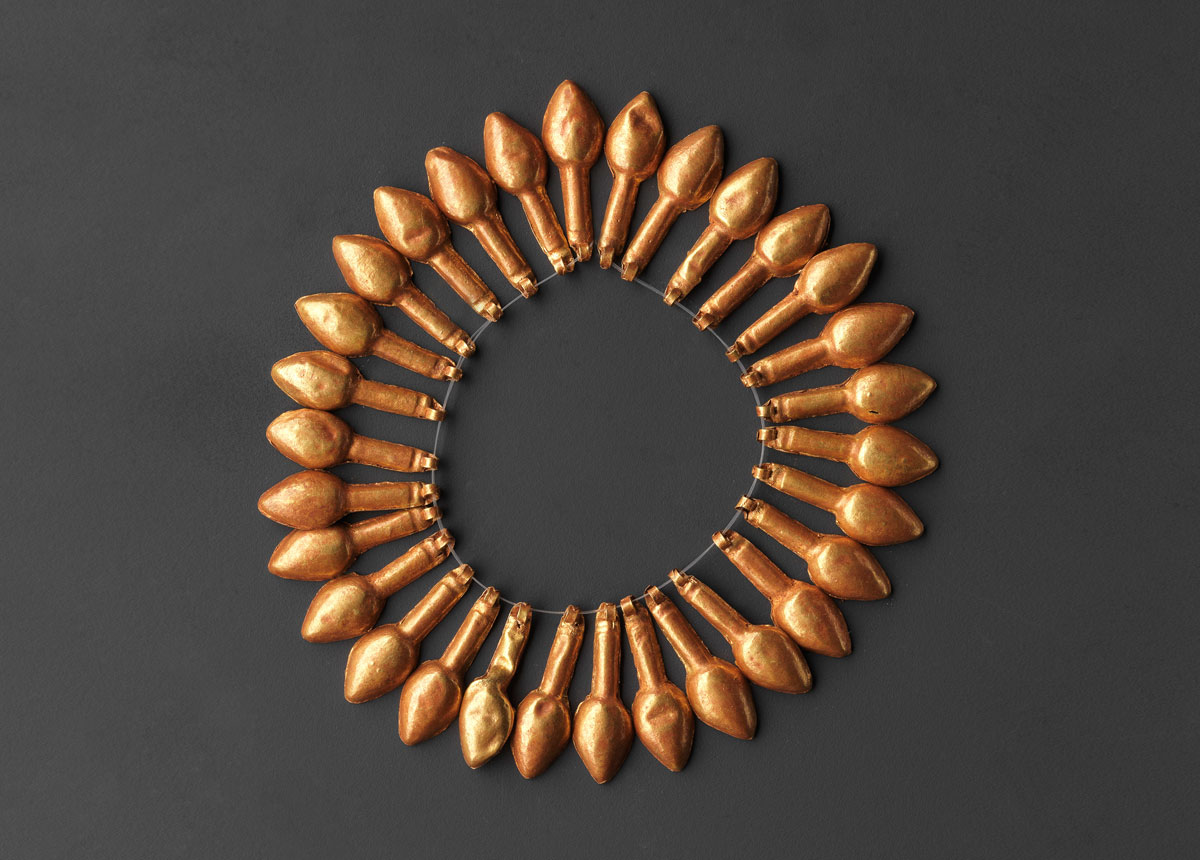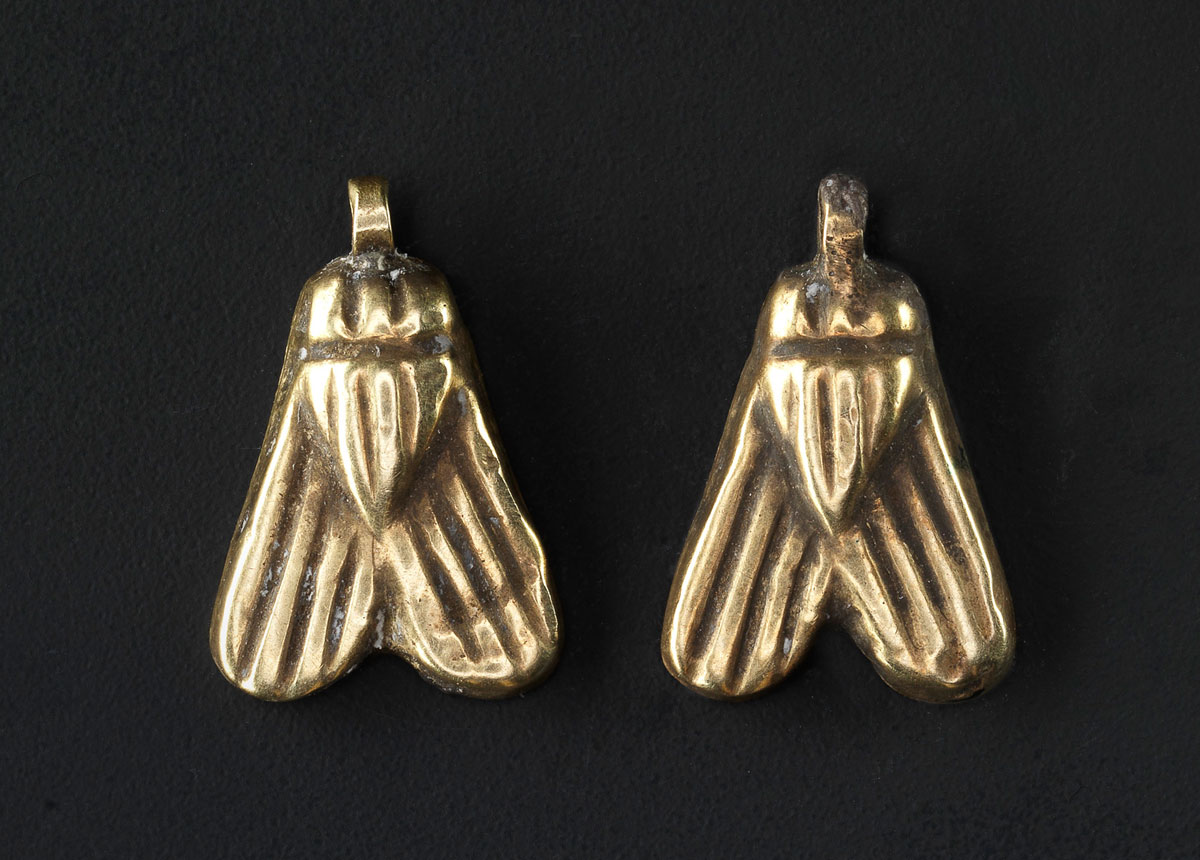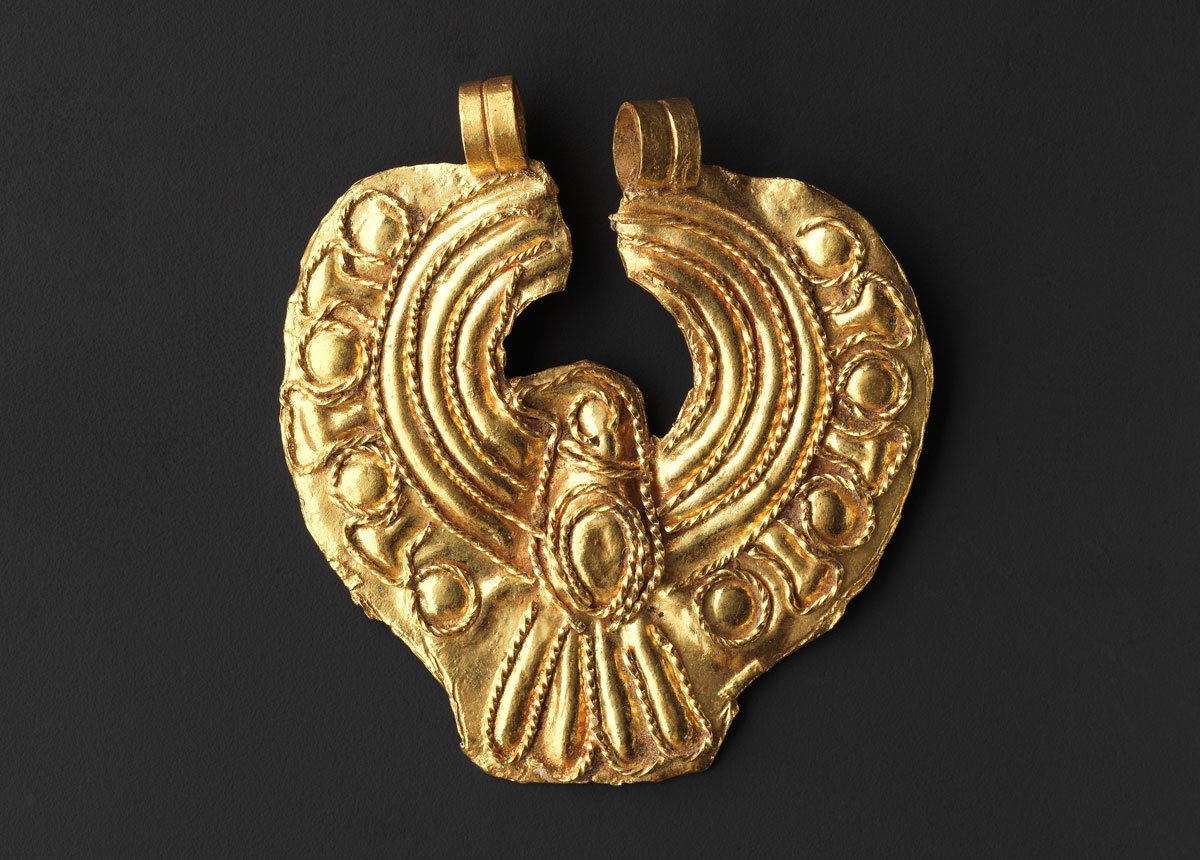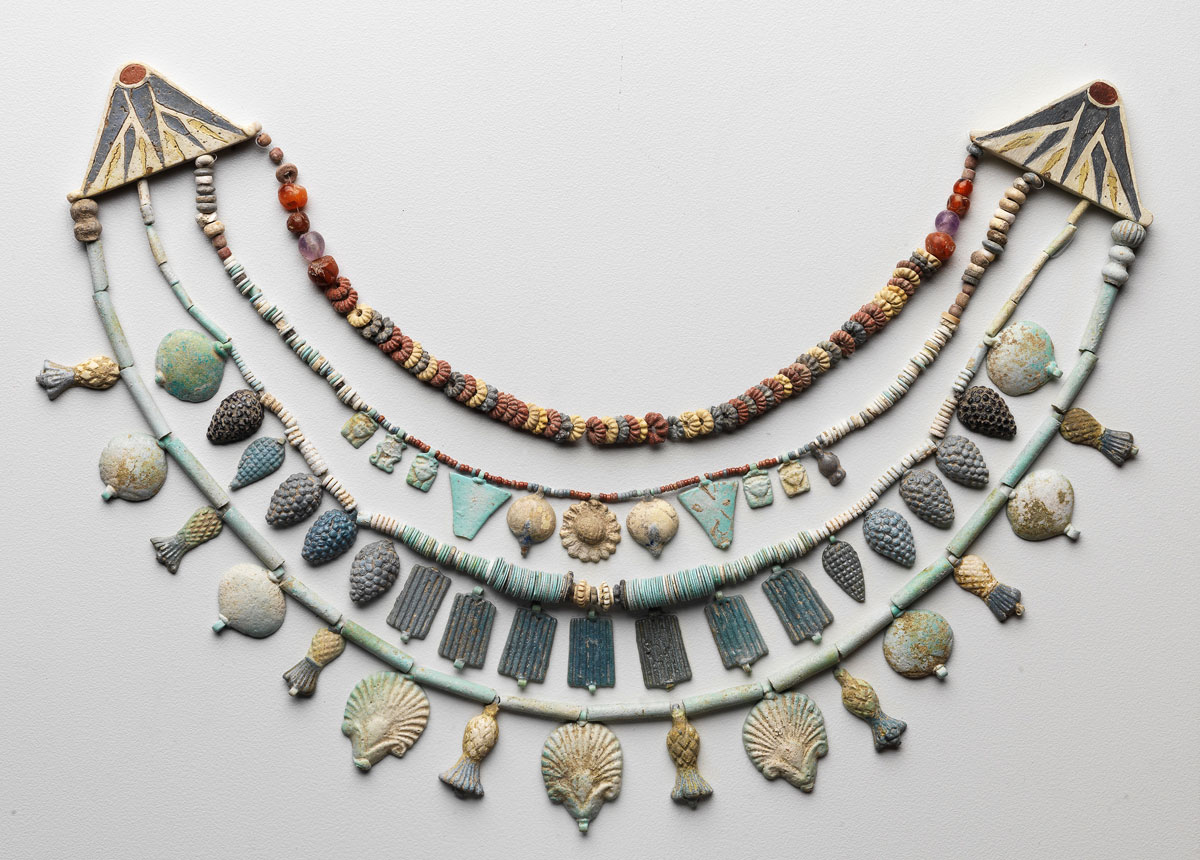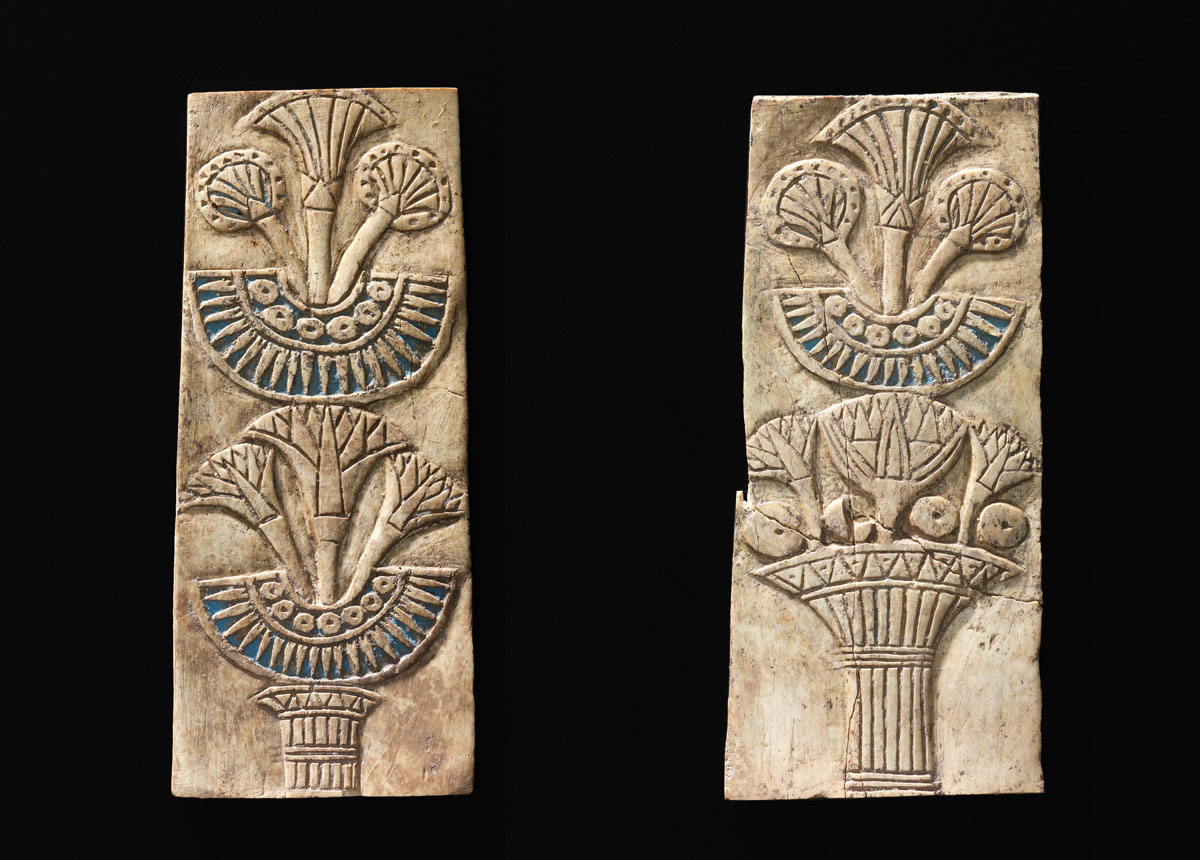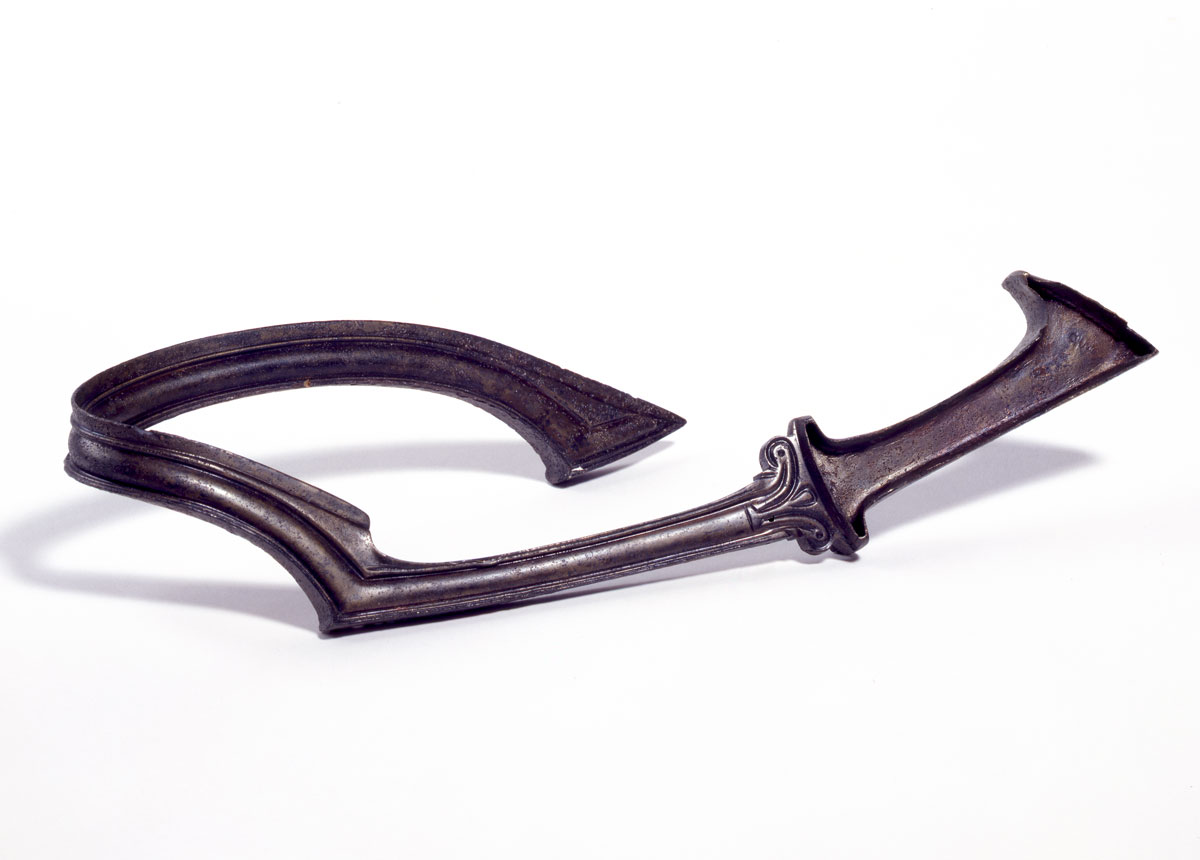Scimitar
An unknown site in Canaan, 1500–1200 BCE, bronze,
The Israel Museum, Jerusalem
The Egyptians adopted the scimitar from the Canaanites. The sword exhibited here was intentionally bent in antiquity to signify the death of the warrior in whose tomb it was found. In 1979 Prime Minister Menachem Begin presented a replica of the scimitar to Egyptian President Anwar Sadat, alluding to Isaiah’s vision: “And they shall beat their swords into plowshares… Nation shall not take up sword against nation; they shall never again know war” (Isaiah 2:4).


